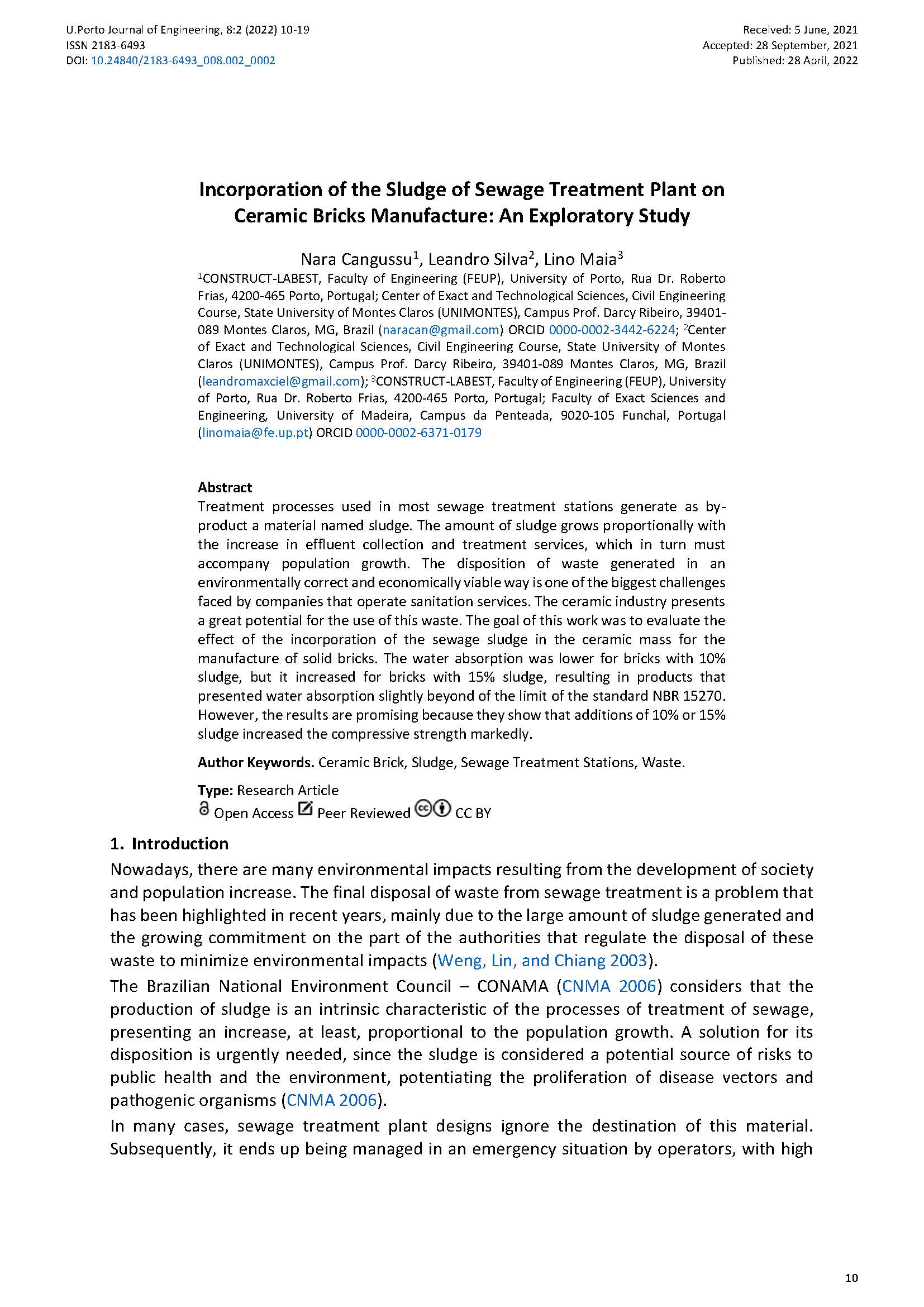Incorporation of the Sludge of Sewage Treatment Plant on Ceramic Bricks Manufacture An Exploratory Study
Main Article Content
Abstract
Treatment processes used in most sewage treatment stations generate as by-product a material named sludge. The amount of sludge grows proportionally with the increase in effluent collection and treatment services, which in turn must accompany population growth. The disposition of waste generated in an environmentally correct and economically viable way is one of the biggest challenges faced by companies that operate sanitation services. The ceramic industry presents a great potential for the use of this waste. The goal of this work was to evaluate the effect of the incorporation of the sewage sludge in the ceramic mass for the manufacture of solid bricks. The water absorption was lower for bricks with 10% sludge, but it increased for bricks with 15% sludge, resulting in products that presented water absorption slightly beyond of the limit of the standard NBR 15270. However, the results are promising because they show that additions of 10% or 15% sludge increased the compressive strength markedly.
Downloads
Article Details

This work is licensed under a Creative Commons Attribution 4.0 International License.
Authors who publish with this journal agree to the following terms:
- Authors retain copyright and grant the journal right of first publication with the work simultaneously licensed under a Creative Commons Attribution License that allows others to share the work with an acknowledgement of the work's authorship and initial publication in this journal.
- Authors grant the journal the rights to provide the article in all forms and media so the article can be used on the latest technology even after publication and ensure its long-term preservation.
- Authors are able to enter into separate, additional contractual arrangements for the non-exclusive distribution of the journal's published version of the work (e.g., post it to an institutional repository or publish it in a book), with an acknowledgement of its initial publication in this journal.
- Authors are permitted and encouraged to post their work online (e.g., in institutional repositories or on their website) prior to and during the submission process, as it can lead to productive exchanges, as well as earlier and greater citation of published work (See The Effect of Open Access).

